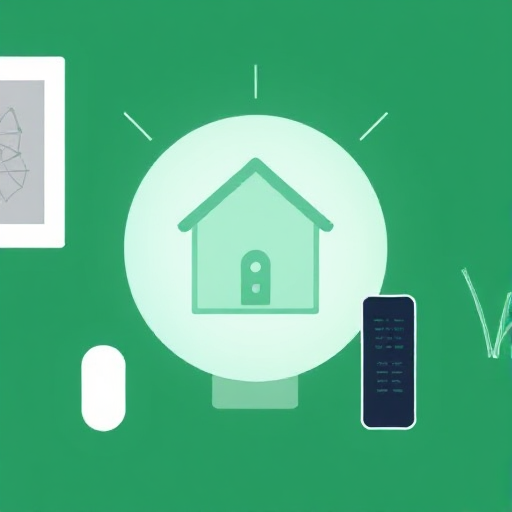
Smart home devices have become a significant part of our everyday lives. From lighting systems and voice-controlled speakers to thermostats and security cameras, these technologies are designed to make homes more convenient, efficient, and even secure. In this article, we’ll explore the basics of smart home devices, with a focus on common devices such as smart lights, smart speakers, and more. Understanding how these devices work and their benefits can help you make informed decisions when considering adding them to your home.
What are Smart Home Devices?
A smart home device is any electrical or electronic device that can be controlled remotely or automatically via an internet connection. These devices can communicate with each other and can be controlled through smartphones, voice assistants (like Amazon Alexa, Google Assistant, or Apple Siri), or specialized apps. The technology behind smart home devices is usually built on principles of automation, remote control, and integration, making it easier for users to monitor and control their home environment.
Common Types of Smart Home Devices
Let’s dive into some of the most popular and widely used smart home devices:
1. Smart Lights
Smart lighting systems are one of the most common and accessible smart home devices. They allow you to control the brightness, color, and even the schedule of your lights through an app or voice commands. These devices often come in the form of smart bulbs or smart light strips, and many can be customized to fit the user’s preferences.
How they work:
- Remote Control: Using your smartphone, you can turn lights on or off, adjust brightness levels, and change colors.
- Voice Control: Through virtual assistants like Alexa or Google Assistant, you can control your lights hands-free.
- Automation: Smart lights can be programmed to turn on or off at certain times, or in response to specific triggers, such as motion detection.
- Energy Efficiency: Many smart lights are LED-based and energy-efficient, helping users save on electricity costs.
Popular Brands: Philips Hue, LIFX, Wyze, TP-Link Kasa
2. Smart Speakers
Smart speakers like the Amazon Echo, Google Nest, and Apple HomePod have revolutionized the way people interact with their homes. These devices combine speakers with built-in voice assistants to perform a variety of tasks, such as playing music, controlling other smart devices, setting reminders, and even making calls.
How they work:
- Voice Commands: Users can control a variety of smart devices through simple voice commands, such as “Alexa, turn off the living room lights” or “Hey Google, set the thermostat to 72 degrees.”
- Multi-Device Integration: Many smart speakers can sync with other smart devices, acting as a central hub for controlling your home.
- Entertainment: Smart speakers allow users to stream music, podcasts, audiobooks, and more. Some also support multi-room audio, allowing you to play the same music across different areas of your home.
- Home Automation Control: Smart speakers often serve as the gateway to controlling all your other smart devices, including lights, thermostats, and even security systems.
Popular Brands: Amazon Echo, Google Nest, Apple HomePod
3. Smart Thermostats
Smart thermostats are designed to optimize energy usage by controlling the temperature of your home based on your preferences and routines. These devices can learn your habits over time, automatically adjusting to keep your home comfortable and energy-efficient.
How they work:
- Learning Algorithms: Smart thermostats, such as the Nest Learning Thermostat, can learn your heating and cooling preferences over time and adjust the temperature automatically.
- Remote Control: Using an app, you can adjust your thermostat from anywhere, ensuring you never come home to an uncomfortable home.
- Energy Efficiency: Many smart thermostats provide data on energy usage and offer suggestions on how to improve efficiency, which can lead to cost savings.
Popular Brands: Nest Thermostat, Ecobee, Honeywell
4. Smart Security Systems
Smart security devices, including cameras, doorbells, and motion sensors, provide enhanced safety for your home. These devices allow you to monitor your property remotely, receive alerts about unusual activity, and even communicate with visitors or intruders in real time.
How they work:
- Video Monitoring: Smart cameras allow you to view live video feeds from your property directly on your smartphone or computer. They often feature high-definition video quality, night vision, and two-way audio.
- Motion Detection: Many smart cameras and doorbell cameras are equipped with motion sensors that alert you if any movement is detected. You can then check the video feed for further information.
- Cloud Storage: Footage from security cameras is often stored in the cloud, allowing you to access it at any time.
- Smart Doorbells: Devices like the Ring doorbell allow you to see who is at your door and talk to visitors remotely.
Popular Brands: Ring, Nest Cam, Arlo, Wyze
5. Smart Plugs and Switches
Smart plugs and switches allow you to control your standard devices through your smartphone or voice commands. You can plug in lamps, coffee makers, or other electronics and manage them remotely, ensuring you never leave devices on when you don’t need them.
How they work:
- Remote Control: You can turn devices on or off using your smartphone, even if you’re not home.
- Voice Control: Use voice assistants to control any device plugged into a smart plug or switch.
- Scheduling: Set timers to turn devices on or off at specific times to help save energy.
Popular Brands: TP-Link Kasa, Belkin WeMo, Eufy
Benefits of Smart Home Devices
Smart home devices offer numerous benefits that enhance the convenience, security, and energy efficiency of your home:
- Convenience: You can control your devices from anywhere using your smartphone or voice commands, eliminating the need to manually adjust settings.
- Energy Efficiency: Many smart devices are designed to help you save on energy costs, such as smart thermostats and lights that adjust based on your usage patterns.
- Enhanced Security: Smart security devices, like cameras and doorbells, provide real-time alerts and video feeds, making it easier to monitor and protect your home.
- Automation: Smart devices can be programmed to work together, creating an automated home that adjusts to your preferences automatically. For example, your smart thermostat can adjust when you leave the house, and your lights can turn on as you return.
- Remote Control: Many smart home devices can be controlled remotely, giving you peace of mind while you’re away from home.
Challenges of Smart Home Devices
While smart home devices offer plenty of advantages, there are some challenges to consider:
- Security Concerns: Since these devices are connected to the internet, they can be vulnerable to hacking if not properly secured.
- Compatibility: Not all smart devices work with all other devices or platforms, so it’s important to check compatibility before purchasing.
- Privacy Issues: Many smart devices collect data on your habits, raising potential concerns about privacy and data security.
- Cost: Some smart home devices, especially those with advanced features, can be expensive upfront.
Smart home devices like lights, speakers, thermostats, and security systems are transforming how we live in our homes. They offer convenience, energy efficiency, security, and the ability to automate many aspects of your home. However, it’s important to weigh the benefits against the challenges, particularly around security and cost. With proper research and thoughtful integration, smart home devices can greatly enhance your home life, offering a modern, connected living experience.






